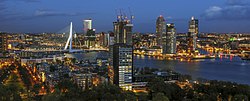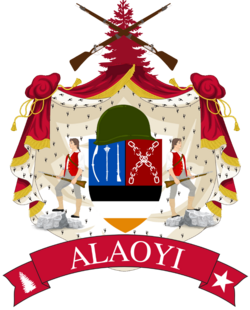Seekant: Difference between revisions
(Created page with "{{Infobox settlement | name = Seekant | native_name = | native_name_lang = | settlement_type = Capital city | image_skyline...") |
No edit summary |
||
| Line 79: | Line 79: | ||
}} | }} | ||
'''Seekant''', officially the '''Federal City of Seekant''', is the capital and second largest city of [[Alaoyi]] as well as one of the largest urban areas in South Galia. Over a million people live in the municipality with 3.6 million living in the urban area and 6.1 million in the metropolitan area. The city stretches along the eastern coast of Alaoyi. The city lies on several different islands and on the mainland of Alaoyi. The area was settled sometime in the early 1500s, around the time migrating Onslanders were traveling to what is now Alaoyi. The city was first mentioned as ''Wogemantel'' in a sales receipt for iron from 1591. As the Onslander language evolved, the name "Seekant" began to become more common. From 1607 to the early nineteenth century, Seekant was the largest city in the [[Onslander Empire]], although [[Rivierkant]] was the capital. | |||
During the fall of the Onslander empire, much of its territories were conquered by Ndibeanyan colonists and integrated into the burgeoning [[Alannan Empire]]. Seekant was the site of several rebellions, including the infamous [[1951 Seekant Insurrection|1951 insurrection]] that kill several ten thousand people. Seekant was under martial law until the 1960s, when it slowly began to recover. Its position as a valuable port city meant that it quicky outpaced many other cities in Alaoyi. When [[End of Ewezuga|ewezuga ended]], Seekant was one of the several candidates for the new capital city of Alaoyi. It was selected by drawing a random slip of paper out of a glass jar, with Rivierkant, [[Meirleach]], [[Biyonummiri]], and [[Katwijk]] being the other candidates. | |||
Today, Seekant is the seat of the Alaoyian government and most agencies, including the [[High Court]], the [[Blue House (Alaoyi)|Blue House]], and [[Alaoyian Capitol|Capitol]]. | |||
{{Alaoyi topics}} | |||
{{Manala topics}} | |||
[[Category:Alaoyi]] | |||
[[Category:Galia]] | |||
[[Category:Manala]] | |||
Revision as of 23:34, 20 February 2023
Seekant | |
|---|---|
Capital city | |
 | |
| Country | |
| Governorate | |
| First mentioned | 1591 |
| Government | |
| • Type | Municipal council |
| • Body | College of Aldermen |
| • Mayor | Jens Rosenmöller |
| Area | |
| • Total | 2,037.1 km2 (786.5 sq mi) |
| • Land | 2,035.1 km2 (785.8 sq mi) |
| • Water | 2.0 km2 (0.8 sq mi) |
| Elevation | 5 m (16 ft) |
| Population (2022) | |
| • Total | 6,127,219 |
| • Density | 3,000/km2 (7,800/sq mi) |
| Demonym | Seekantian |
Seekant, officially the Federal City of Seekant, is the capital and second largest city of Alaoyi as well as one of the largest urban areas in South Galia. Over a million people live in the municipality with 3.6 million living in the urban area and 6.1 million in the metropolitan area. The city stretches along the eastern coast of Alaoyi. The city lies on several different islands and on the mainland of Alaoyi. The area was settled sometime in the early 1500s, around the time migrating Onslanders were traveling to what is now Alaoyi. The city was first mentioned as Wogemantel in a sales receipt for iron from 1591. As the Onslander language evolved, the name "Seekant" began to become more common. From 1607 to the early nineteenth century, Seekant was the largest city in the Onslander Empire, although Rivierkant was the capital.
During the fall of the Onslander empire, much of its territories were conquered by Ndibeanyan colonists and integrated into the burgeoning Alannan Empire. Seekant was the site of several rebellions, including the infamous 1951 insurrection that kill several ten thousand people. Seekant was under martial law until the 1960s, when it slowly began to recover. Its position as a valuable port city meant that it quicky outpaced many other cities in Alaoyi. When ewezuga ended, Seekant was one of the several candidates for the new capital city of Alaoyi. It was selected by drawing a random slip of paper out of a glass jar, with Rivierkant, Meirleach, Biyonummiri, and Katwijk being the other candidates.
Today, Seekant is the seat of the Alaoyian government and most agencies, including the High Court, the Blue House, and Capitol.

